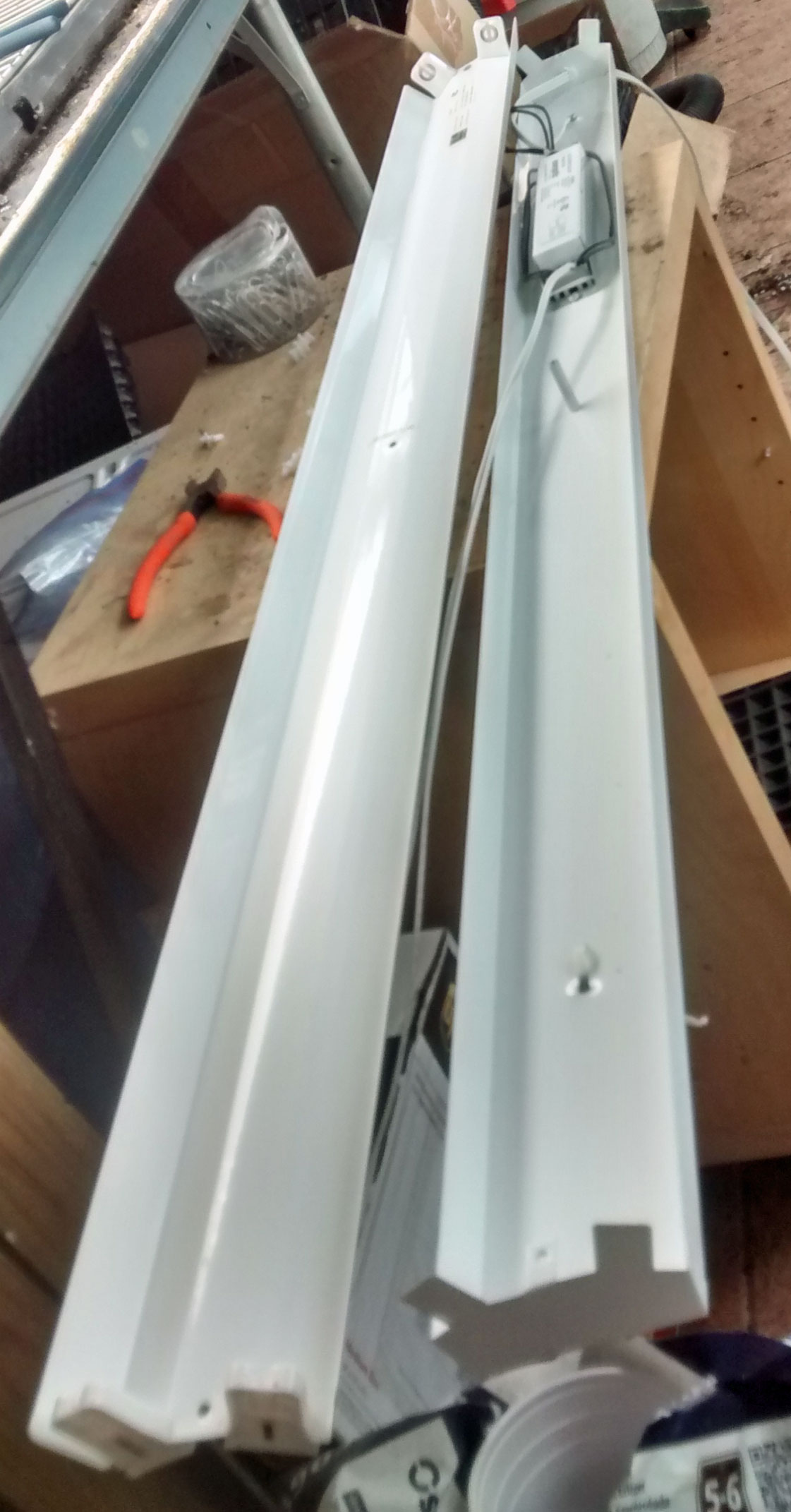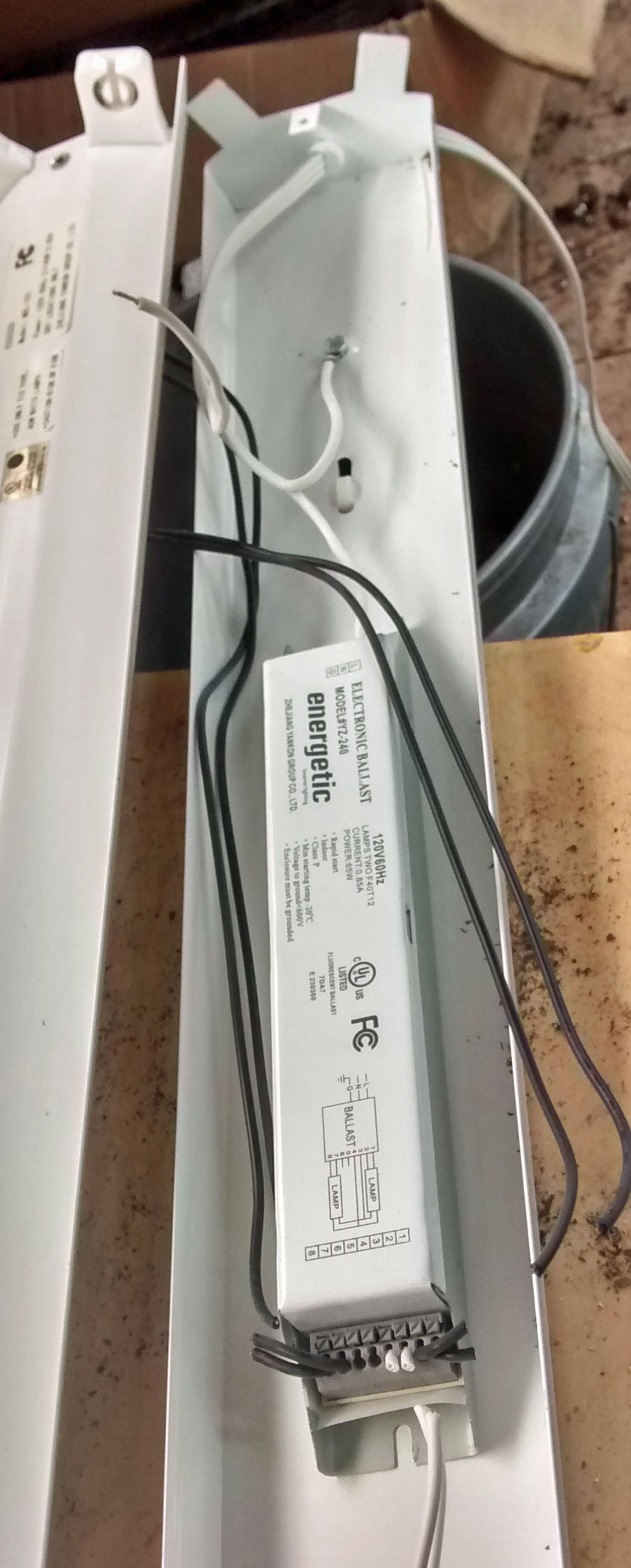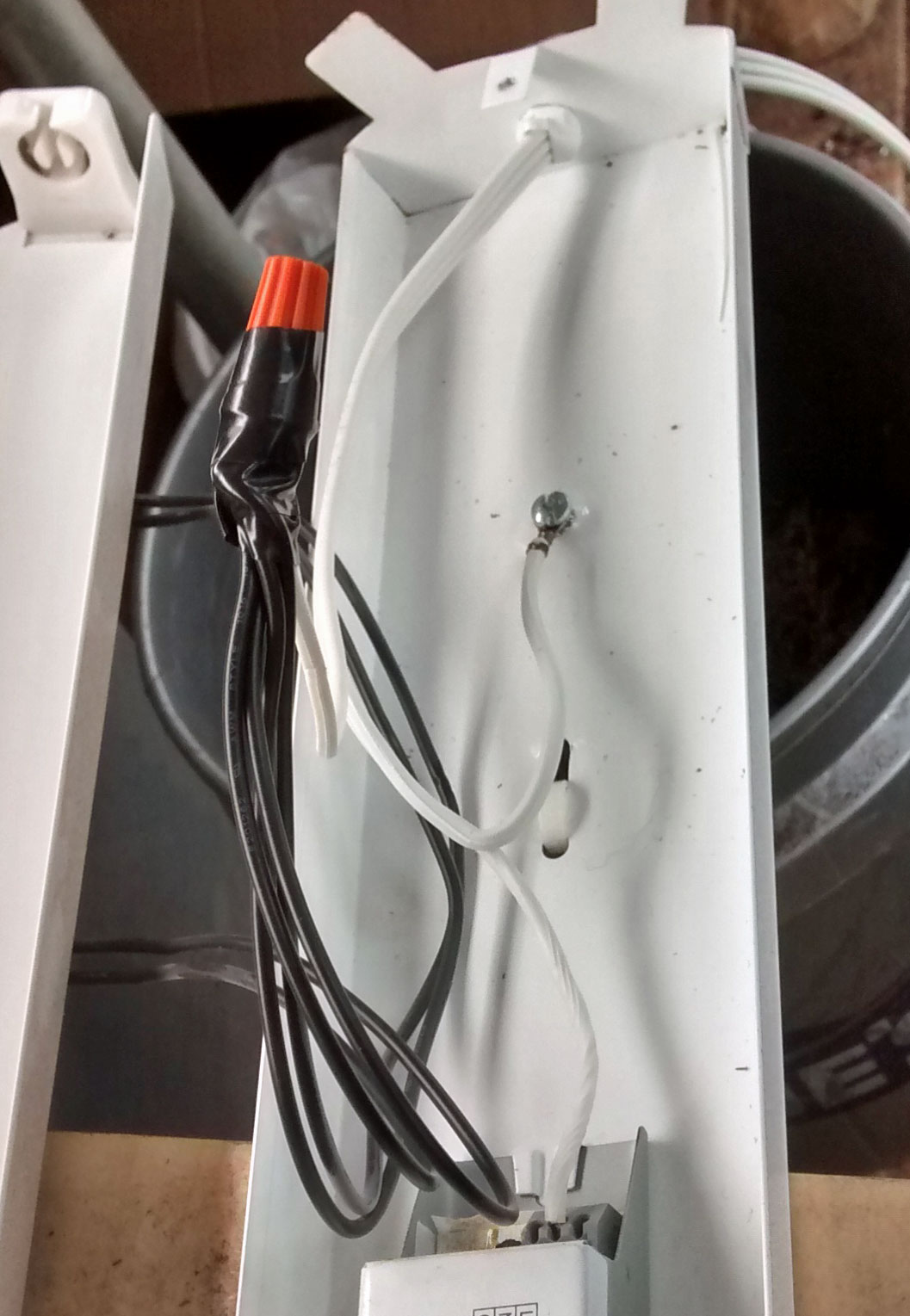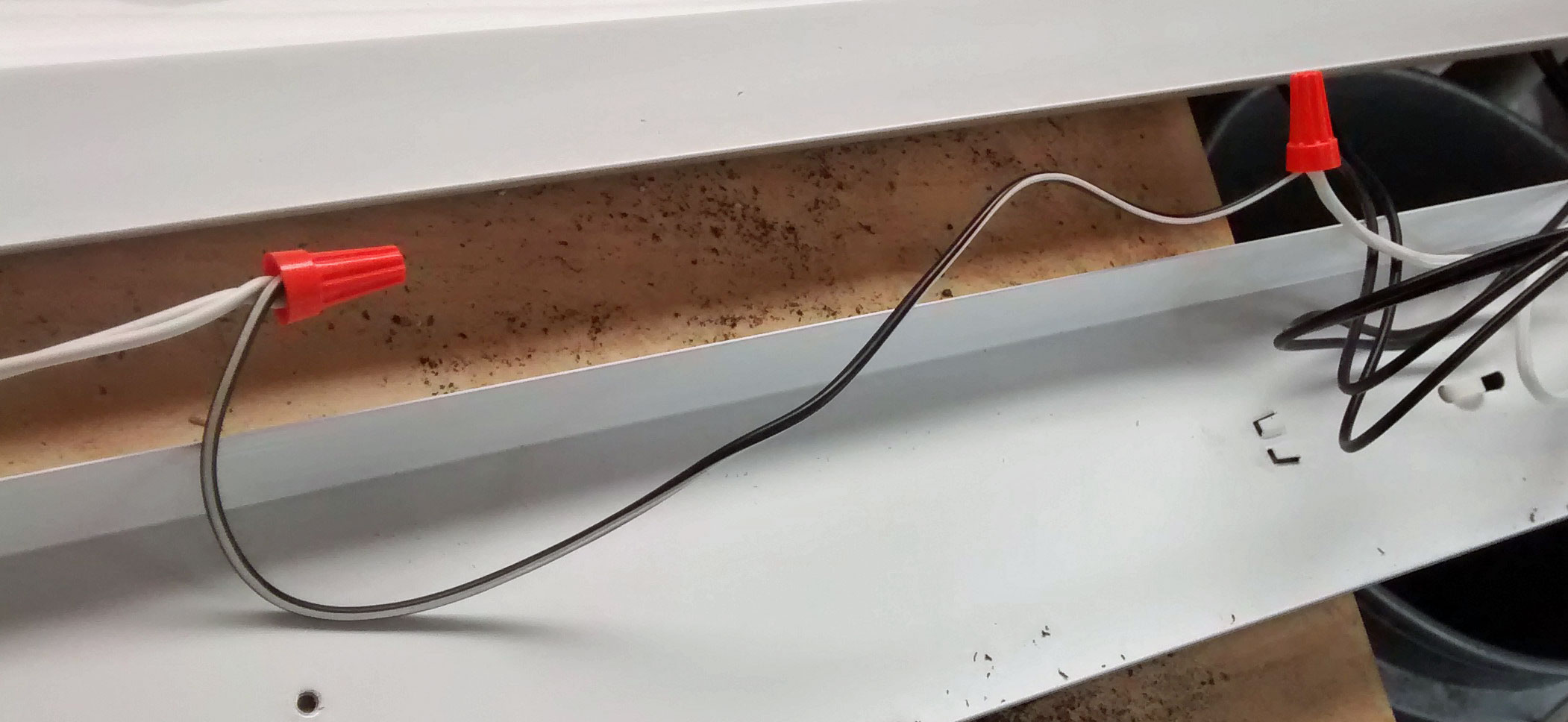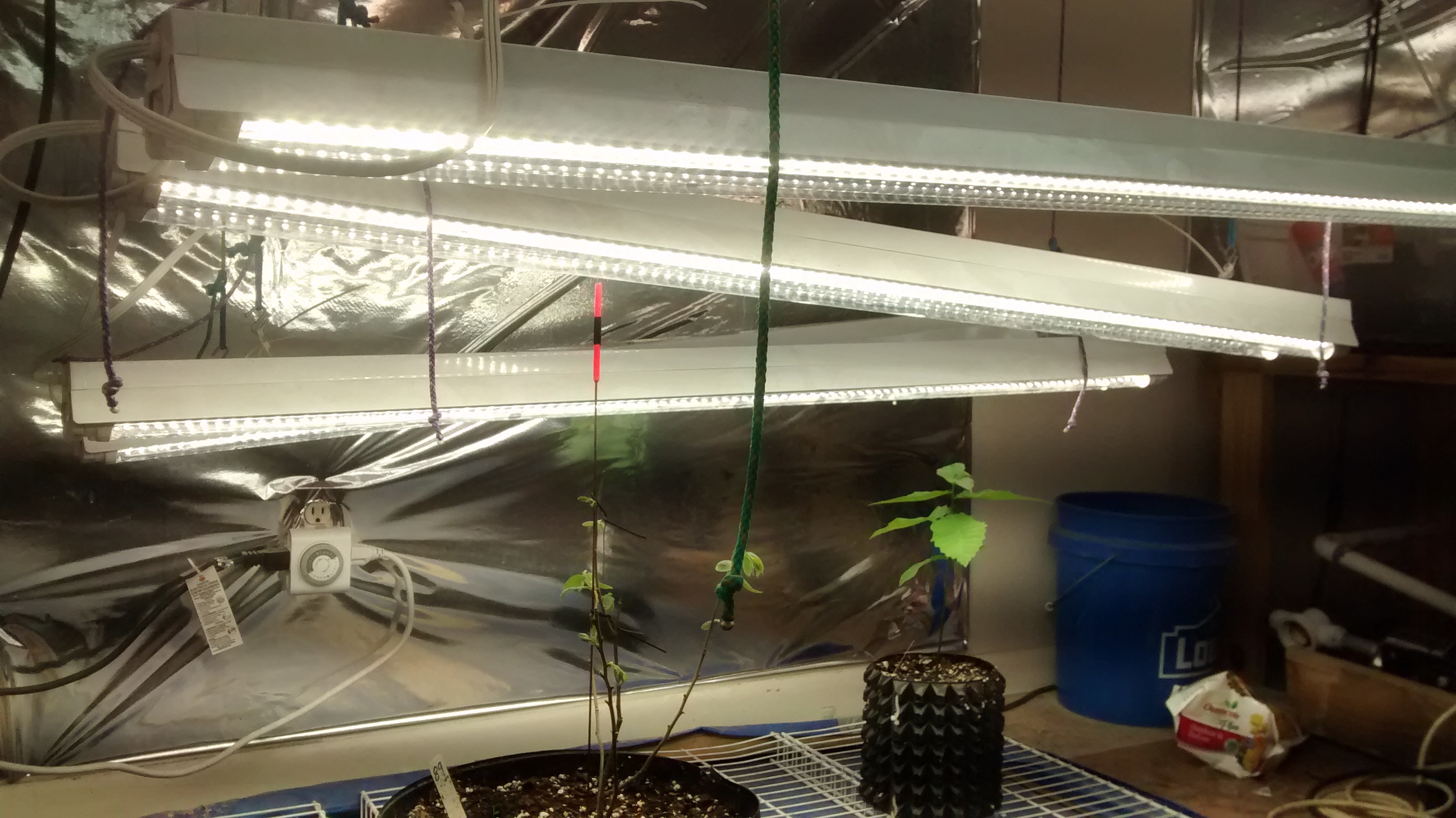yoderjac
5 year old buck +
I like the form factor that shop lights provide for growing my trees from seeds and nuts indoors. I can organize my trees by height in 18s and hang the shop lights at an angle so they are close and roughly equidistant from all my trees. Light energy diminishes with the distance squared, so I like cool lights so I can hang them close to the seedlings without the heat from the bulb being an issue. I rigged all my shop lights with prussic knots so I can slide each side up and down to any height. When I started, LED lights were not cost effective and did not come in the shop light 4' bulb format. Since trees are only spending a tiny fraction of their lives indoors, light color (Kelvin measurement) is really not that important. Except for the very expensive grow bulbs that come with a spectrogram, the color specified is just an average anyway. I have 4 different grow areas and lots of fixtures already setup. I have been buying fluorescent bulbs in bulk to get the cheap. I just ran out of bulbs tonight. With so much invested in fixtures that I like, I decided not to buy LED fixtures.
Instead, I decided to convert to LED replacement bulbs. I ended up ordering these: https://www.amazon.com/JESLED-Dual-..._feature_seventeen_browse-bin:9692445011&th=1. They are dual end powered and I'll need to bypass the ballast in the existing fixtures. As I searched around, I found single end powered LED bulbs output between 1800 and 2300 lumens or there about. I found dual end powered run only about $1 or so more per bulb, so I decided to go that route.
When they come in, I'll update this thread on how easy or hard it was to rewire as well as how I think they perform.
If anyone else is converting to LED, feel free to chime in with your experience, what bulbs you chose and why.
Thanks,
Jack
Instead, I decided to convert to LED replacement bulbs. I ended up ordering these: https://www.amazon.com/JESLED-Dual-..._feature_seventeen_browse-bin:9692445011&th=1. They are dual end powered and I'll need to bypass the ballast in the existing fixtures. As I searched around, I found single end powered LED bulbs output between 1800 and 2300 lumens or there about. I found dual end powered run only about $1 or so more per bulb, so I decided to go that route.
When they come in, I'll update this thread on how easy or hard it was to rewire as well as how I think they perform.
If anyone else is converting to LED, feel free to chime in with your experience, what bulbs you chose and why.
Thanks,
Jack


